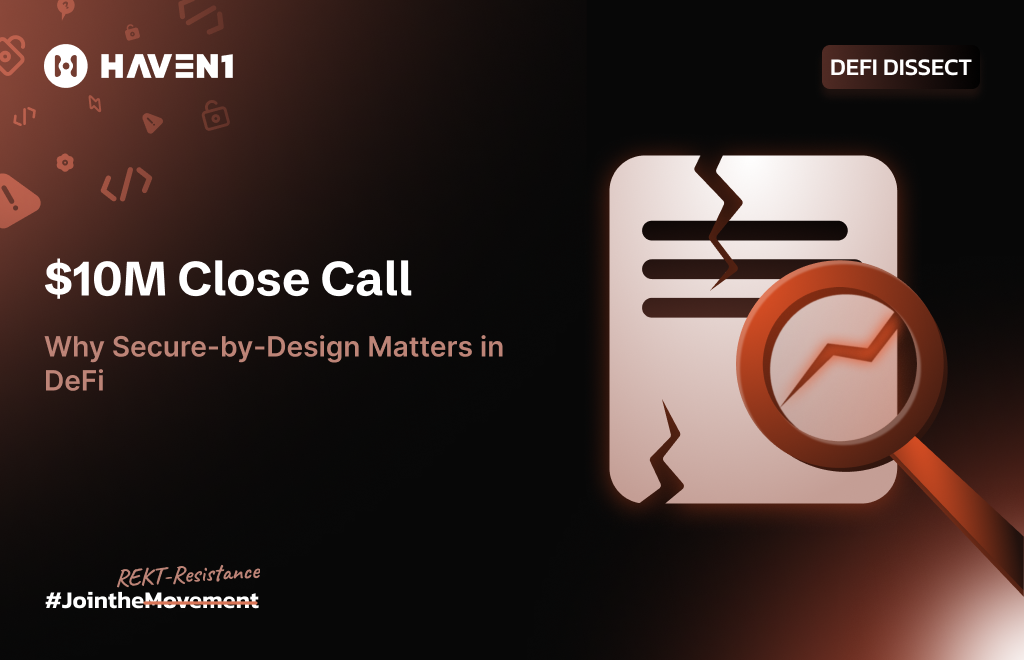$10M Close Call. The Risk of Ignoring Security in DeFi Design
Another week, another critical vulnerability dodged—barely. But this time, it’s not about one protocol or one exploit. It’s about a structural flaw in how we build in public.
Jul 16, 2025

ERC-1976, the "Extensible Contract Standard," promises modular, upgradeable smart contracts via plugins-clean, composable, efficient. But the recent discovery of a $10M+ backdoor risk hiding in Venn-based deployments exposes a dangerous truth: composability is fragile when it’s blind to context.
This wasn’t a bug in the standard. It was how the standard gets used, wiith defaults, assumptions, and zero guardrails for plugin permissions. And worse? This isn't isolated. Multiple protocols including Berachain were left vulnerable. Some caught it. Others had to be told. That’s the unfortunate norm of DeFi today: build first, patch later, pray someone’s watching. This needs to change.
The Risk Nobody Saw (Until They Did)
ERC-1976 allows smart contracts to dynamically load and unload modules via plugins. That flexibility is great- until you realize that unless every single plugin is properly permissioned, you’ve essentially given the attacker a menu of doorways to try.
In this case, certain deployments allowed a plugin to escalate privileges and hijack contract logic without anyone noticing. No flash loans, no reentrancy, no opcodes out of place. Just a plugin with the wrong permissions loaded by someone who trusted the system.
Berachain caught it and patched it preemptively. Others, like Kinto, didn’t get so lucky. But the point isn’t who missed what. The point is: we shouldn’t still be relying on luck and Twitter threads to catch these things.
Composability Without Guardrails = Exploits Waiting to Happen
The whole pitch of ERC-1976 is “composable security.” The ability to upgrade, hotfix, extend. But we’re now seeing that most teams implement this without enforcing any structural validation for:
- Plugin origin verification
- Function call permissions
- Cross-plugin privilege escalation
- Reentrancy across plugin boundaries
Each of these is a known risk. But the tooling around ERC-1976 still assumes devs will implement all checks themselves.
🚨 Why Are We Still Fixing Things Retroactively?
The most infuriating part? The fix still depends on someone noticing. In 2025, with all the security tooling, bug bounties, and audit hype, most DeFi threats are still retroactive cleanup jobs.
Even with security scanning the horizon, the actual remediation still comes down to this: someone privately messages a protocol and hopes they fix it before someone malicious does.
Permissionless innovation is beautiful, but is it cutting it? Will institutions jump onto DeFi while exploits are constantly happening?
What Needs to Change
- Secure-by-default standards. ERC-1976 is promising, but it needs hardened scaffolding. Default deny. Warn on unsafe plugin combinations. Enforce permissions at load time.
- Real-time risk telemetry. We need runtime analytics for contract behavior—not just static audits. Think “anti-virus” for deployed contracts.
- Aggressive public tooling. Build open-source tools that simulate privilege escalation before mainnet, and make them part of every CI pipeline.
- Stop calling it 'good disclosure' when we’re all on fire. If we’re finding critical backdoors post-deployment, we’ve already failed.
Why Haven1 Is Built for a Safer Future
That’s why Haven1 was built differently. Security isn’t an afterthought, it's the foundation. Every smart contract deployed on Haven1 must be verified, every protocol vetted, and every upgrade path audited. By embedding permissions, MEV resistance, and runtime controls at the network level, Haven1 offers a safer environment for DeFi to grow, one where institutions don’t have to bet on luck or Twitter threads to feel secure.
The future of composability isn’t less innovation, it's safer innovation by design.

